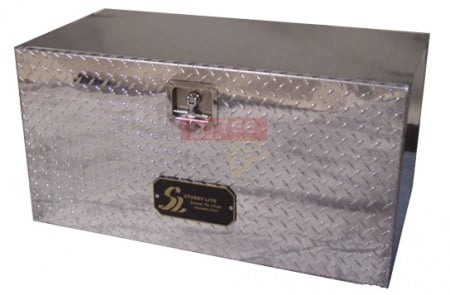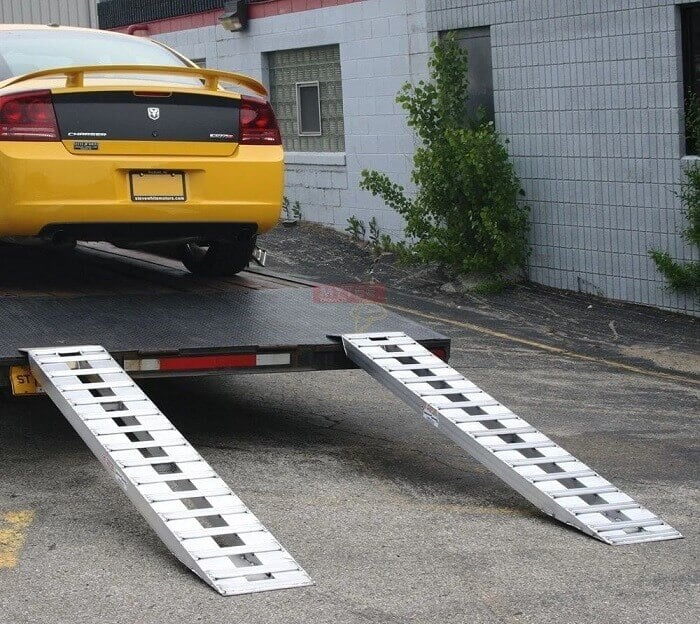The average flatbed trucker has at least one toolbox affixed to his or her rig. Some have a large trailer toolbox and two aluminum step boxes to maximize storage space, and some drivers have even more. The thing to remember is that proper organization of aluminum toolboxes maximizes storage space and reduces the frustrations of not being able to find the tool you’re after when you need it.
What constitutes the right number and size of toolboxes isn’t for us to say. Every flatbed trucker has his or her own preferences. But Mytee can offer a few organizational tips to help truckers make the most of their storage space. Keep in mind that we carry a full inventory of aluminum toolboxes for truck drivers and pickup truck owners.

Organizing Tarps
Assuming you are the kind of trucker who stores tarps and toolboxes, the first rule of thumb is to consider which tarps you use most often. Let’s say you regularly haul lumber loads that require coverage on all sides. You are going to want those tarps easily accessible at all times.
You may have a selection of smaller smoke tarps or general purpose canvas tarps that you only use every once in a while for machinery loads. Because they are used less frequently, you can store them on the bottom of your toolbox in favor of putting your lumber tarps on top.
One thing to note is that tarps should never be put away while still wet. If throwing a wet tarp into a tool box is unavoidable at the time, it should be retrieved and dried out as soon as possible. Leaving tarps in long-term storage with moisture trapped in the folds is a good recipe for mold.
Organizing Tools
When it comes to tools, truckers need to separate things like ratchet straps and binders from the hand tools used to perform regular maintenance. It’s a good idea to keep them in separate toolboxes if you have the space. If not, divide existing toolbox into two separate compartments using a piece of scrap wood or metal.
Ratchet straps can be rolled up and stacked very neatly in one corner of the box. Chains can be coiled and stacked in another corner. Binders, hooks, and other similar tools can then be placed in the center of the compartment. As for those hand tools, keep them separated according to tool type. Put all your sockets in one location, all the wrenches in another, etc. Organizing hand tools is a lot easier if you invest in some shelves and smaller boxes that can fit inside your main toolbox.
Everything in Its Place
It should be obvious that the strategy we are promoting here follows that old adage that says, ‘a place for everything and everything in its place’. The hard part is not necessarily finding a place for everything that needs to be stored. It is finding the most efficient place and then making sure that the items are returned to their places after use.
Few things are as frustrating as having a journey interrupted by some sort of failure and then not being able to find the tools you need to fix the problem. Equally frustrating is the task of securing a load and having to dig through your toolbox looking for the right straps or chains. Organizing your toolboxes changes all that.
An organized toolbox – where everything has a fixed place that never changes – is one that lends itself very well to efficiency and productivity. Take it from us; you’ll be glad you organized your equipment once you do it.














